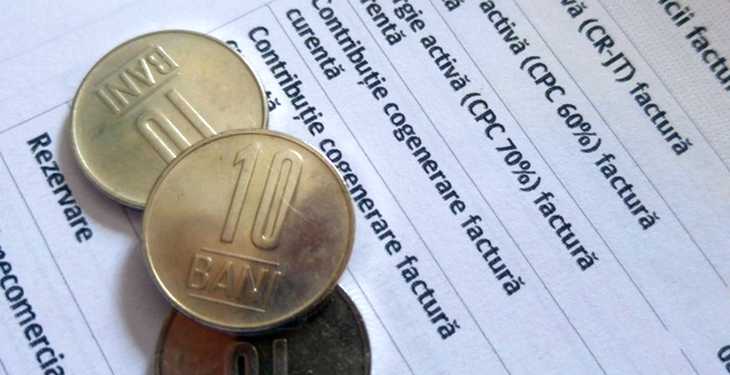We were provided with an opinion paper signed by two representatives of the group “Energy for the Future”. We published and promoted it, convinced that this true “Manifesto for renewable energy” will rise many comments from the experts in the energynomics.ro community. We encourage you to contribute with your own perspective, and we guaranttee that we will offer editorial space for each of the opinions expressed. [Editor’s Note]
Mihai Necula and Daniela Dinescu
“Energy for the Future” Group
An imminent collapse of the renewables sector directly favors the (expensive and polluting) fossil energy producers, it can produce a shock on the energy bills and it can bring Romania back to a situation of dependence on expensive imports.
Thus, subsidizing renewable energy has logic, both from an ecological and market mechanisms perspective, but for protecting the consumers, also.
The renewable energy is cheaper and cheaper (for new installations), thus a real social protection for the vulnerable consumers can be performed in the future simply by eliminating the bureaucracy blockages and the artificial costs placed in the way of the renewable energy, as well as by a stable, predictable and fair legislative framework, capable of giving trust to the financiers and investors in new energy sources: cheap and clean.
MYTH 1 – The green certificates enrich the multinationals
The fossil propaganda has spread the idea of the “green certificates that enrich the multinationals”, when in reality we have a billion euros that only the wind industry recorded as a loss in the last two years (and most of the companies are Romanian!).
In fact, the contribution to the green certificates returns in the Romanian economy, because rates at banks, taxes, salaries are payed and services are contracted by Romanian companies.
MYTH 2 – Renewable energy is expensive
The renewable industry’s blockage that occurred after 2013 favors those who really increase the energy prices. The prices for the fossil fuel production are volatile, while the renewable production comes at predictable prices. The prices of new renewable energy installations decrease from year to year, while the costs of the new conventional energy capacities increase, as well as the costs with the maintenance and improvement of the technology for the expensive and polluting capacities, are increasing.
Therefore, 90% of new installed capacities in Europe in 2016 are based on renewable energy (50% are in the wind sector). In addition, wind and solar power have become the cheapest energy sources for new installations and can compete successfully in the open market, if they are allowed to do so!
MYTH 3 – The renewable energy increases the invoices
Unfortunately, the presentation mode of the invoices is untrue and easily feeds the propaganda against renewables. The cost of green certificates is conspicuous and it is not explained anywhere that, in fact, this cost is offset by the lower price of the renewable energy, because, totaled, the renewable energy + the green certificate cost less than the alternative of the fossil energy.
Thus, the consumer is manipulated to become penny wise and pound foolish, Romanians are constantly being lied to (by newspaper articles with bombastic headlines) and pushed to criticise in the wrong direction. A general impression is created that the renewables are taking money out of the country and that the bankruptcy of this sector is a positive aspect, something that will cheapen the invoices by eliminating the green certificates.
The math is very simple: Oltenia produces (with loss) at 230 lei per MWh and Hunedoara at 280 lei per MWh. The renewable producers can survive with 160-170 lei per MWh + 47 lei per MWh (green certificate contribution – if the GEO project to bring a minimum balance in this area will be adopted). Let us not forget how big was the price of energy in 2008 and how much it has declined with the advent of renewables!
WARNING – The electricity prices could increase
However, Romania has decided to look to the past (through the measures taken since 2013) and the invoice for this decision begins to come upon us all. We already talk of a possible 10% increase in costs for natural gas and 1-2% for starters, for electricity.
The electricity consumption in Romania is growing year after year while the renewables sector stagnates (a collapse of proportions at any moment is now possible). This situation favors the conventional energy producers (especially the fossil fuels sector) which can only survive at a higher price of the energy.
The National Regulatory Authority for Energy (ANRE) understands that the renewables are solution to the normalization of the electricity prices. Niculae Havrileţ, president of ANRE, said for Agerpres that, for the second quarter of the year, we expect a decrease in prices as a result of a high production from hydropower, wind power and photovoltaics, which could balance the price situation: “As we have a methodology that clearly sets out how to calculate the energy prices taken from the Day Ahead Market, meaning that spot market which had substantially increased during January, we do believe that in the next quarter, when we will have an excess of water and wind and even solar power, we will have very low prices, towards the negative zone. We believe that, ultimately, by July 1st the prices will balance out and be at the same level”.
This is the same authority which ordered in 2013 and 2014 measures that substantially increase the connection costs and thus disproportionately penalizes the development of new capacities of cheap and clean energy. At the same time, it does not require even a penny more for the refurbishment of the expensive and polluting capacities.
Our concern is that from July 1st we will discuss of a first increase of the price for energy. As the stagnant offer from renewable energy (clean and cheap) will no longer cope with the increased demand for energy in the market, the prices will be increasingly determined by the producers of fossils – which are expensive and polluting.
